When Daniel King opened fire on police in Sydney's west, he was out of his mind.
He had chronic traumatic encephalopathy (CTE), a brain disease which ruled his emotions and behaviour, after years of hard hits playing rugby league.
But sadly, he's not the first footballer to die with CTE and he won't be the last - until something changes.
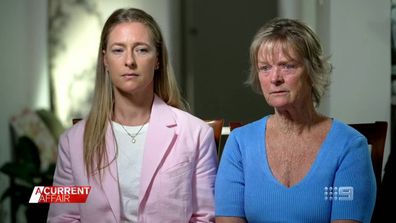
His family says the real Daniel was a loving son to Sandra, protective brother to Megan and talented at sport.
"He was very thoughtful. Very selfless. Everything was about someone else and about getting somewhere better," his sister Megan King said.
King was nine when he started playing rugby league.
"Always played wing or ... fullback, but very quick off the mark. And yeah, good. And a good team player, actually. Very good team player," Sandra said.
But Sandra wasn't keen on it being his future.
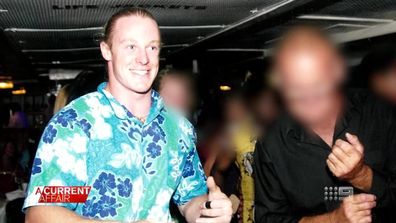
"I didn't want him to play rugby league, because Daniel was a fabulous cricketer," Sandra said.
Megan remembers her brother getting concussed a lot.
"The time to recover after each head injury took longer and longer," Megan said.
"It's entertaining. It's great to watch. It's a good family day out.
"But there was always like a pit in your stomach. What if they do get injured?
"So it was quite scary at the same time."
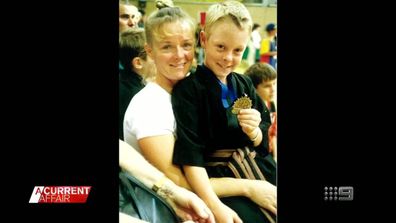
READ MORE: The best bargains to to fill your shopping cart this Black Friday
Among the worst was an incident at a grand final, when Daniel was told to take out an opposition prop.
"He said, 'Mum, I didn't even have any idea what I was doing. I only knew I was playing football'. He said, 'I had to look at my jersey, I didn't even know what side I was playing on mum,'" Sandra said.
When he was 23, after 13 years of playing rugby league, Daniel copped a career-ending blow.
That night, Sandra took him to hospital and a few days later, doctors scanned his brain.
"It came back to show that he had a significant bleed on the brain and he'd had a stroke," Sandra said.
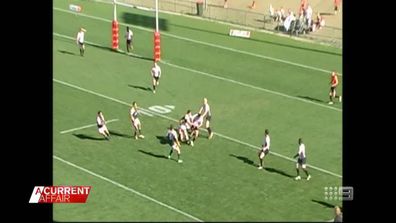
"What was the culture like at the rugby club?" A Current Affair asked.
"He would do whatever was asked of him because he wanted to play grade," Sandra said.
"You don't play sport at that level unless you want to win, but it costs people their lives," Megan said.
Over the next decade, Daniel's family says he lost control over his mind and personality and began using drugs.
"The pain and the suffering and not being able to be the father he wanted to be, because of his anger," Sandra said.
"Daniel had tried suicide a couple of times before through prescription medication at home (and said), 'This time Mum, I won't fail.'"
"I think he did really try ... and then he decided that he couldn't live anymore," Megan said.

On October 2, 2019, Daniel was on drugs and armed with a shotgun, when he opened fire at his ex-lover's home and then St Marys and Penrith police stations in Sydney's west.
READ MORE: Iconic ice-cream factory makes sweet return after floods
He was eventually killed by police, after being shot 24 times.
"Obviously very sad, he was such a good person," Megan said.
After he died, his family was contacted by Associate Professor Michael Buckland - director of the Australian Sports Brain Bank - who examined Daniel's brain and discovered he had chronic traumatic encephalopathy or CTE, which develops from repetitive head impacts.
"It's the hundreds if not thousands of these injuries, particularly in young brains, that seem to lay the foundation for this degenerative brain disease," Buckland said.
"When they're young they often present with mental health-like problems - so depression, anxiety, impulsivity, drug and alcohol abuse."
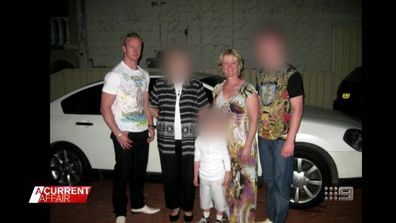
"Do you think CTE was to blame for Daniel's behaviour?" A Current Affair asked.
"I have no doubt that his behaviour on that night was driven primarily by his brain disease and I think it's a credit to him, I have to say, in that police report that police said he actually had opportunities for kill shots and he didn't take them," Buckland said.
"How did you feel when you learned that he had CTE?" A Current Affair asked.
"It was quite bittersweet," Megan said.
"It gave us a little bit of relief that it wasn't Daniel who was making those choices, his brain had been taken over."
Buckland has spent the last six years examining brains of men and women, who played contact sports like rugby league, rugby union and Australian rules.

"I'm surprised that we keep seeing it so frequently in our donated brains, I just don't know how big this problem is, but it does worry me that it's a lot bigger than anyone currently appreciates," Buckland said.
Recently, a landmark international study between the University of Glasgow, Boston University and the University of Sydney, found there was a link between the length of a Rugby Union career and the risk of CTE.
It looked at the results of 31 post-mortem brain examinations of former players and found CTE in 68 per cent of them.
It also discovered that each extra year of playing the sport added a 14 per cent risk of developing the brain disease.
"I am firmly convinced that we should not have full contact versions of these sports for children," Buckland said.
"They need to understand that it's not just about winning a game because there are a lot of games after that to win, just be a little respectful of human life."
https://news.google.com/rss/articles/CBMingFodHRwczovLzlub3cubmluZS5jb20uYXUvYS1jdXJyZW50LWFmZmFpci9jb25jdXNzaW9uLWN0ZS1kYW5pZWwta2luZy1jaHJvbmljLXRyYXVtYXRpYy1lbmNlcGhhbG9wYXRoeS1jb250YWN0LXNwb3J0LXJ1Z2J5LzY3YzEyZGE0LWYwODItNDFhYi05MjdmLWNjZWJlNjc2YmE2MdIBRGh0dHBzOi8vYW1wLm5pbmUuY29tLmF1L2FydGljbGUvNjdjMTJkYTQtZjA4Mi00MWFiLTkyN2YtY2NlYmU2NzZiYTYx?oc=5
2023-11-25 09:39:42Z
CBMingFodHRwczovLzlub3cubmluZS5jb20uYXUvYS1jdXJyZW50LWFmZmFpci9jb25jdXNzaW9uLWN0ZS1kYW5pZWwta2luZy1jaHJvbmljLXRyYXVtYXRpYy1lbmNlcGhhbG9wYXRoeS1jb250YWN0LXNwb3J0LXJ1Z2J5LzY3YzEyZGE0LWYwODItNDFhYi05MjdmLWNjZWJlNjc2YmE2MdIBRGh0dHBzOi8vYW1wLm5pbmUuY29tLmF1L2FydGljbGUvNjdjMTJkYTQtZjA4Mi00MWFiLTkyN2YtY2NlYmU2NzZiYTYx
Tidak ada komentar:
Posting Komentar